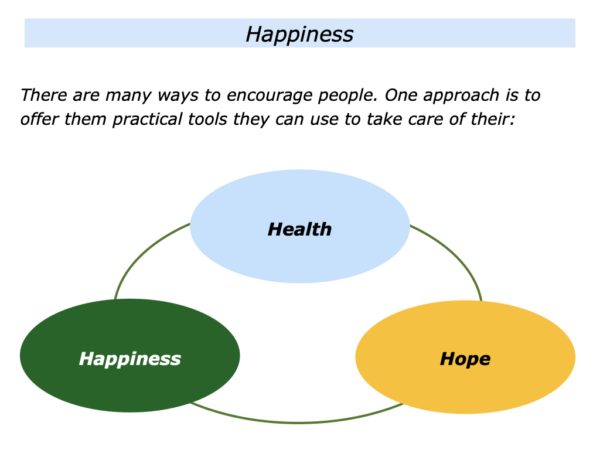
There are many ways to encourage people. One approach is to help them to focus on the following themes in their lives and work.
Health – to do things that help themselves and other people to be healthy;
Hope – to do things that help themselves and other people to be hopeful;
Happiness – to do things that help themselves and other people to be happy.
This is a circular approach. Helping a person in one area can have a beneficial effect in the other areas. Imagine you are facilitating a session where a person wants to explore these areas. Let’s consider these themes.
Being Healthy
People want to feel physically and psychologically healthy. Unless you are medically qualified, it may not be advisable to focus on a person’s physical health. If wish, however, you can invite them to tackle the following exercise.
This invites them to explore their own view of their health. Bearing in mind the person’s age and time in life, the exercise invites them to rate their physical health on a scale 0-10. They can then describe the specific things they can do to maintain or improve this rating.
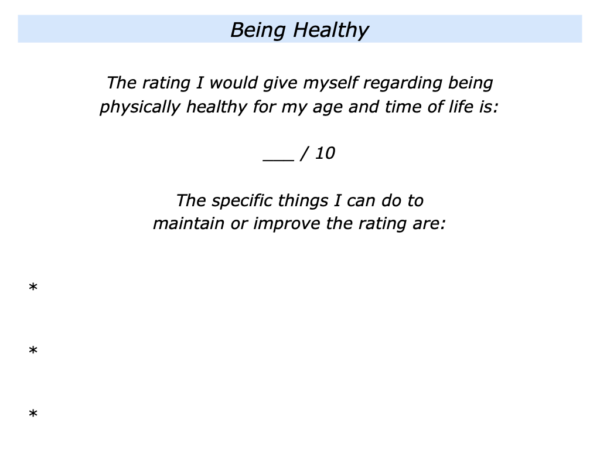
If the person wants to explore this topic further, you can ask some of the following questions. (Again, it is vital to explain that you are not offering any medical advice or opinions.)
“What are your goals regarding your energy and physical health? When have you felt most healthy? What were you doing right then?
“What was the amount of sleep you were getting? What was the food you were eating? What was the exercise you were doing?
What do you want to do regarding your physical health? How can you get some early successes? What will be the benefits of doing these things?”
Being Hopeful
People want to feel hopeful. They want to feel in control and able to shape their futures. This calls for having a positive attitude but also controlling the controllables. It is to focus on what they can control rather than become paralysed about what they can’t control.
This has implications regarding having sense of hope. A person may feel hopeful about shaping their own future, for example, but concerned about the future of the planet. Being positive, however, they will focus on how they can help their loved ones and future generations.
If appropriate, you can then use some of the following questions regarding their sense of hope.
“When have you felt most hopeful in your life? What were you doing right then? How can you follow these principles again in the future?
“Let’s focus on controlling the controllables. What are the things you can control in your life and work? What are the things you can’t control?
“How can you build on what you can control and manage what you can’t?
What are your long-term goals in life?
“Imagine you are 80 years old and looking back on your life. What is your picture of success? What are the things you want to have done by then that for you will mean you have had a successful life? How can you work towards these aims?”
Ricky Snyder, who wrote The Psychology Of Hope, helped people to increase their sense of hope by expanding their way power. This is their ability to see ways to shape their futures.
You can pass on knowledge and practical tools that a person can use to take this step. Bearing this in mind, you can invite them to tackle the following exercise.
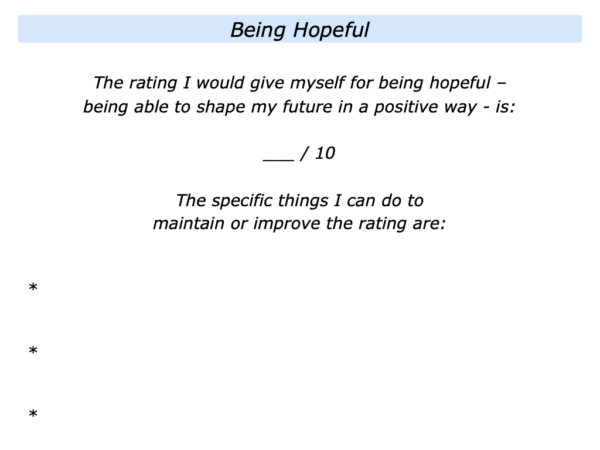
Imagine that you have clarified the extent to which a person feels hopeful. If appropriate, you can encourage them by following elements of the practical hope approach. This involves focusing on the following steps.
Personal Goals
This involves create an encouraging environment in which the person or a group of people feel at ease. It is then to help them to clarify their goals – their picture of success.
Practical Hope
This involves encouraging people to study success – such as what works in the area they want to explore. It is then to offer strategies and practical tools that people can use to do their best to achieve their picture of success.
Positive Results
This involves providing ongoing support and finding solutions to challenges. It also involves doing your best to encourage, educate and enable people to achieve their picture of success.
Being Happy
When you ask parents what they want for their children, they often say: “We want them to be happy.” So the question is: How do people achieve happiness?
During the past 40 years the Positive Psychology approach has researched the topic of happiness. This involved asking the following kinds of questions.
What kinds of people are happy? What are the principles such people follow to be happy? Is it possible for other people to follow these principles in their own ways to maintain or improve their happiness?
Here is an overview of some principles that have emerged.
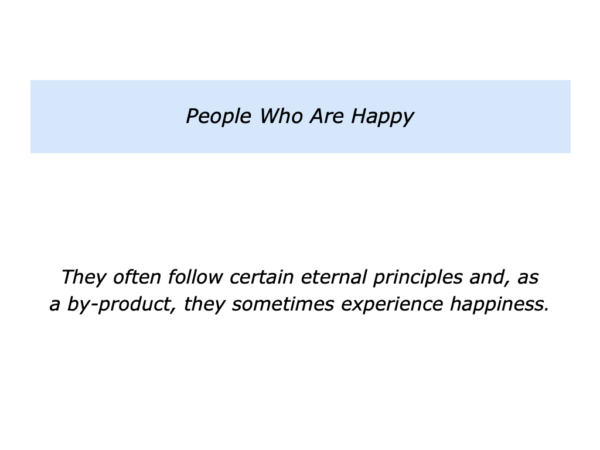
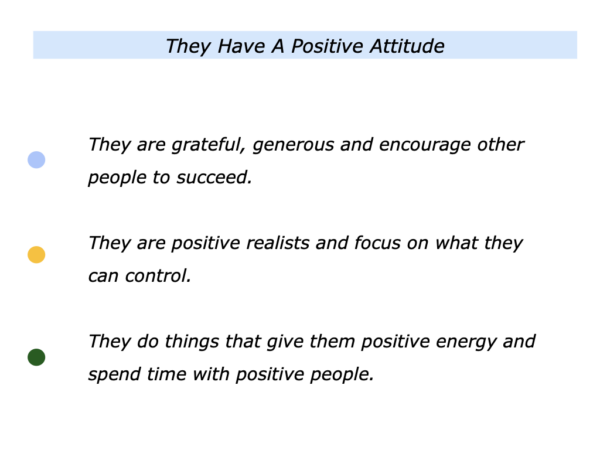
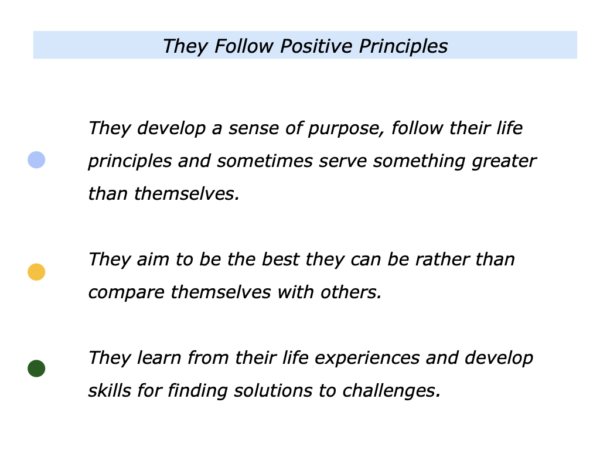
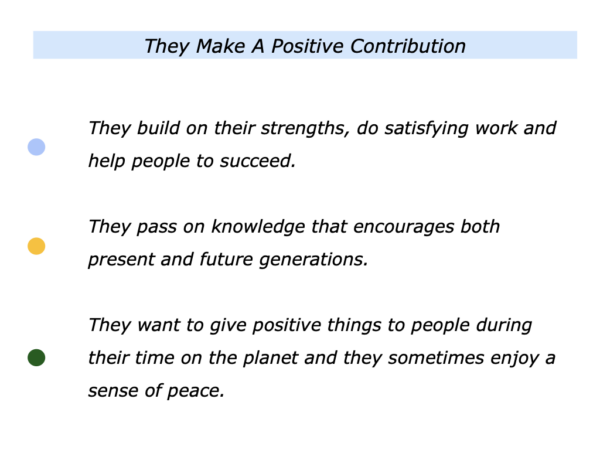
Let’s return to the person you may be helping. If appropriate, you can ask them the following questions.
“What is your picture of happiness? What will be kinds of things you are feeling, thinking and doing? What are some of the things you can do to increase the chances of feeling happy?
“Looking back, when have been the times you have felt happy? What were you doing right then? How can you follow these principles again in the future? What will be the benefits?”
Invite them to rate their sense of happiness and the specific things they can do to maintain or improve the rating. If appropriate, you can then pass on practical tools they can use in their own ways.
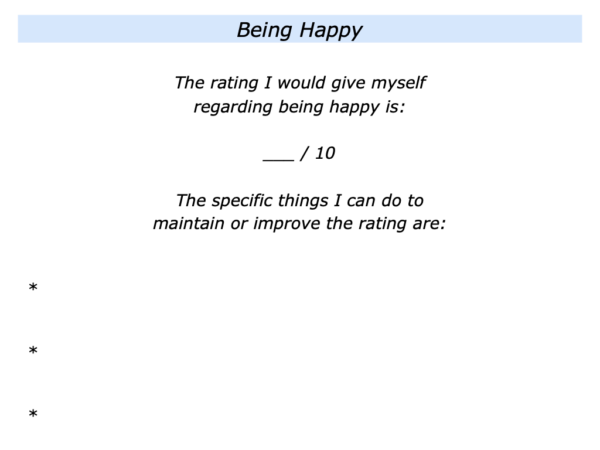






Leave a Reply